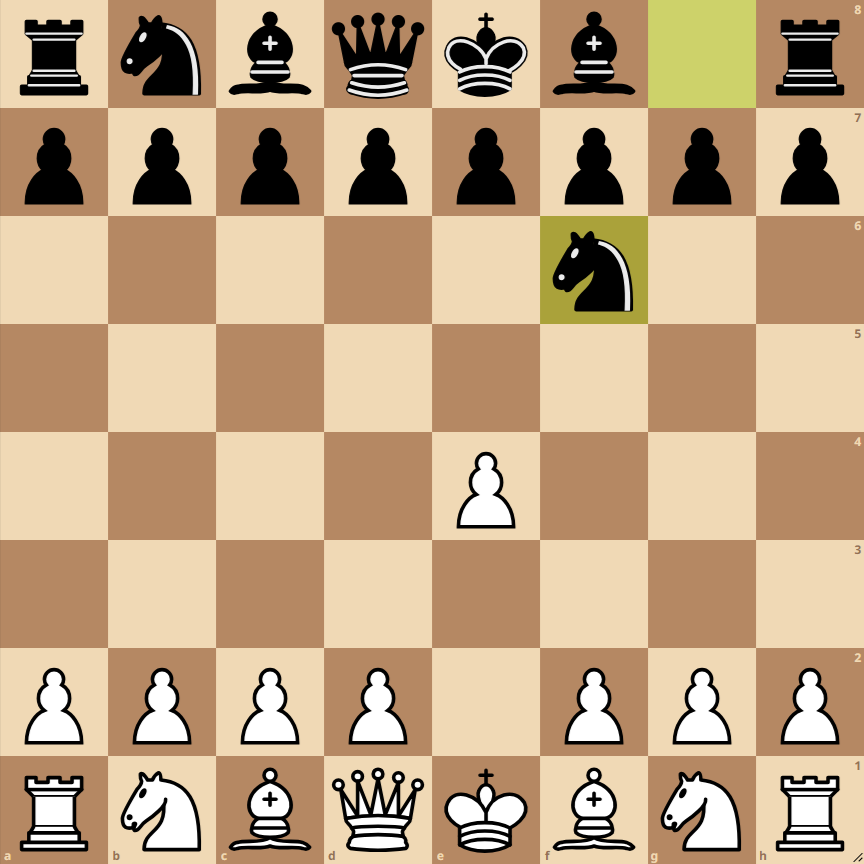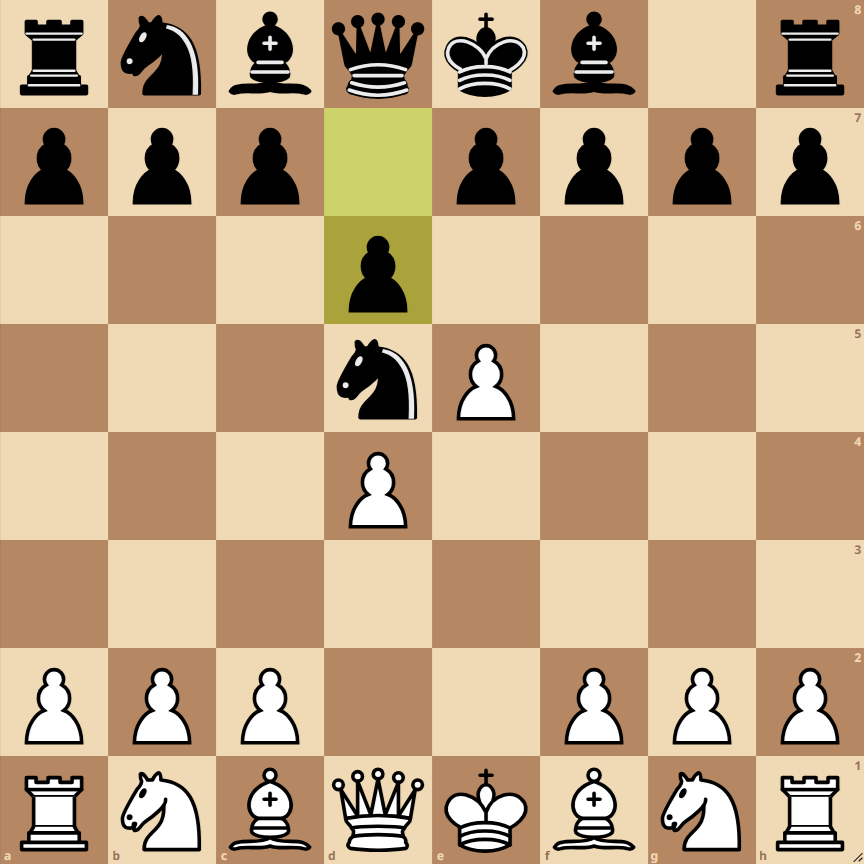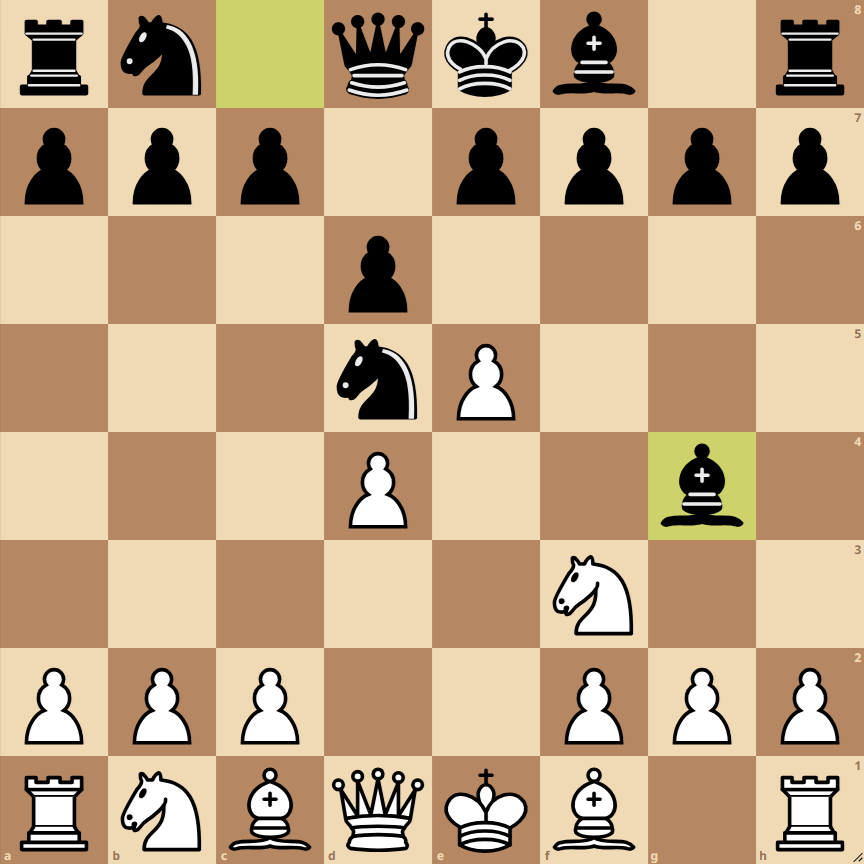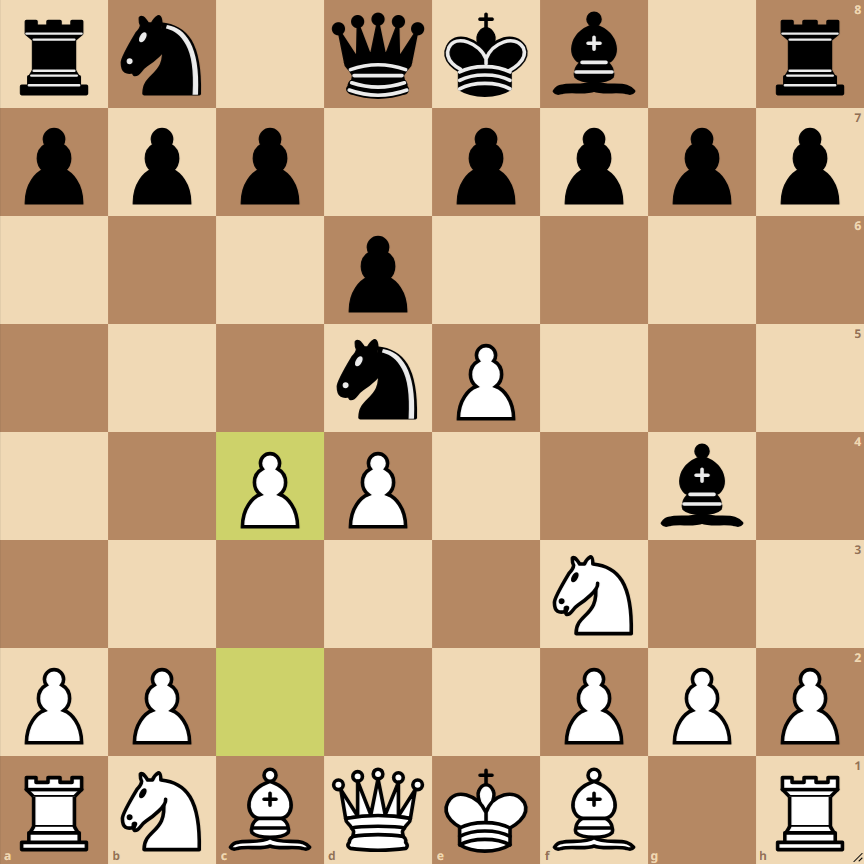How to Play the Alekhine Defense – Modern Variation, Alekhine Variation



- 1. e4: White starts with the move of the king’s pawn, controlling the center and preparing for the development of minor pieces.
- Cf6: Black responds with the Alekhine Defense, challenging the central pawn e4 and aiming to provoke premature pawn advances by White.
- 2. e5: White advances their pawn, attacking the knight on f6 and gaining space in the center.
- Cd5: The black knight retreats to d5, a strong central square. This is a typical regrouping in the Alekhine Defense.
- 3. d4: White strengthens their center with another pawn, preparing for the development of their minor pieces.
- d6: Black counterattacks in the center, aiming to undermine the white pawn on e5.
- 4. Cf3: White develops a minor piece to an active square, maintaining pressure in the center.
- Ag4: Black develops their bishop, attacking the knight on f3 and possibly preparing for long castling.
- 5. c4: White gains space on the queen’s side and prepares the development of the bishop on c1.
Variations of the Alekhine Defense – Modern Variation, Alekhine Variation

Exchange Variation
In this variation, White opts to exchange their d4 pawn for Black’s d6 pawn. This leads to a symmetrical pawn structure and often results in a quieter positional game.
Four Pawns Variation
An aggressive line where White advances their pawns in the center with f4. This variation aims for dominant control of the center but also exposes White to certain tactical risks.
Fianchetto Variation
In this variation, White develops their light-squared bishop to g2, aiming for long-term central control and increased king safety. It’s a more strategic and less direct move.
Alekhine Defense: Modern Variation, Alekhine Variation – Position Analysis and Strategies
Opening Moves:
- 1.e4 Cf6
- 2.e5 Cd5
- 3.d4 d6
- 4.Cf3 Ag4
- 5.c4
The Alekhine Defense is a bold and dynamic choice for Black, characterized by an immediate challenge to the White central pawn. In this specific line, the Modern Variation of the Alekhine Variation, Black seeks an asymmetrical struggle, allowing White to establish a strong center but with the intention to undermine it later.
For White:
- Control of the Center: White has established impressive control of the center with pawns on d4 and e5, and now seeks to solidify their spatial advantage with the move c4, which also prepares the development of the light-squared bishop.
- Development and King Safety: The next natural step for White would be to develop the light-squared bishop and castle kingside, ensuring the king’s safety while maintaining pressure in the center.
- Pressure on the Black Knight on d5: White can look for opportunities to attack the knight on d5, a central point in Black’s defense.
For Black:
- Active Counterplay: Black must actively seek counterplay to avoid being overwhelmed by White’s space and initiative. Moves like …c5 to attack the White center are typical in this structure.
- Strategic Options: Black has several interesting options. Moves like …Cb6, …Axf3, and …e6 offer different approaches to challenging the White pawn structure.
- …Cb6: Retreats the knight to a safer position, allowing Black to prepare …c5 or even …g6 and …Ag7, developing the bishop on a great diagonal.
- …Axf3: Exchanges the bishop for the knight, potentially disrupting the White pawn structure if White recaptures with the g-pawn. This can lead to increased activity for Black’s pieces and weaken White’s king’s protection.
- …e6: Aims to break the strong White pawn center and open lines for Black’s other pieces.
Conclusion: In this position, White enjoys spatial advantage and control of the game, but must be cautious with their development plans and king’s safety. Black, on the other hand, must actively seek opportunities to counter and create imbalances, exploiting any weaknesses in the White position. Black’s choice between …Cb6, …Axf3, or …e6 can dramatically define the course of the game, offering different tactical and strategic possibilities.

